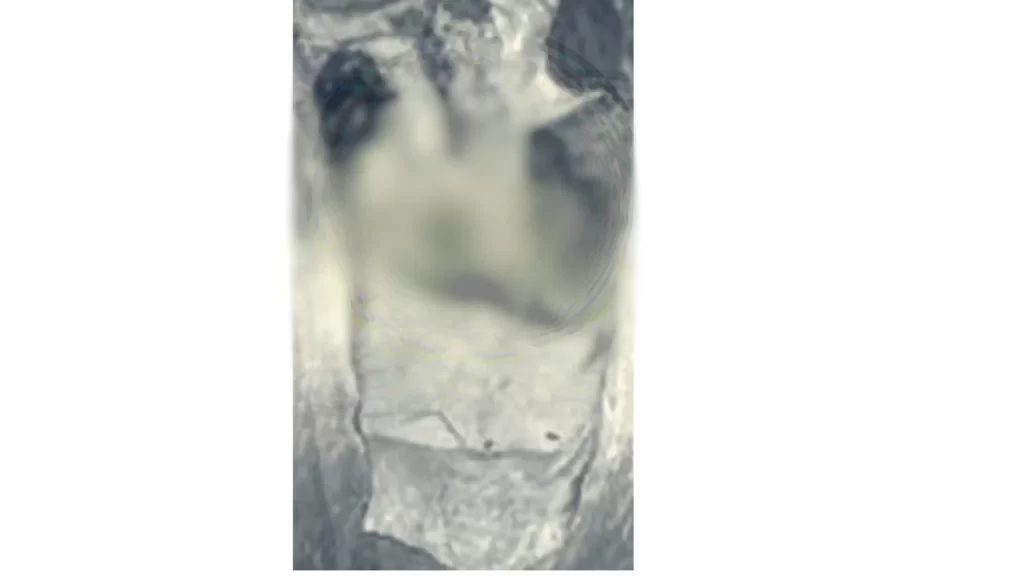Last updated on May 15th, 2023 at 10:10 am
Katarzyna Zowada, a young woman from Kraków, Poland, was brutally murdered in late 1998. Katarzyna Zowada was a 23-year-old Jagiellonian University student. The investigation into her murder was challenging, and officials requested help from specialists worldwide, including the FBI.
For over two decades, despite enormous attempts, the case remained unresolved. Finally, in 2017, detectives found additional evidence that led to the arrest of one of the case’s suspects. It had been 19 years since Katarzyna’s murder. Thus, this was a significant milestone. Unfortunately, as of September 2019, the suspect was still being held as investigators gathered evidence and built their case.
Katarzyna Zowada began her studies in theology at Jagiellonian University in Kraków in 1998. She was characterized as lovely, yet she was also sorrowful and reclusive. She had been suffering from depression since her father died in 1996, and she had changed her field of study twice throughout her stay at university.
Katarzyna was supposed to see her mother at a psychiatric clinic where she was undergoing treatment for depression on November 12, 1998. However, she never arrived, and when her mother attempted to report her missing, she was told to wait.
It wasn’t until January 6, 1999, that a piece of evidence – a fragment of human skin subsequently confirmed as belonging to Katarzyna Zowada – was discovered aboard a ship in the Vistula River. On January 14, her right leg was found in the river. It was first thought that a propeller had injured her corpse, but after examining the fragments discovered, it was revealed that her limbs and skull had been purposely removed, and the skin had been prepared so that the culprit had worn it like a bodysuit.

Katarzyna Zowada’s Disappearance
When Katarzyna Zowada failed to attend a 6 p.m. appointment on November 12, 1998, her mother got concerned. She went to Katarzyna ‘s house, but there was no trace of her.
Fearing that Katarzyna had joined a cult, she contacted a Dominican Monastery, but they advised her to report the case to the police. However, the cops were unconcerned because they thought Katarzyna would reappear at some time. After all, she was an adult.
Because of Katarzyna Zowada’s depression, many suspected she had taken her own life, which was common in the youth culture of Satanism and other cults during the “depressing autumn” season.
Katarzyna’s mother received two phone calls from an unknown man asking to meet him in Kraków Market Square. Unfortunately, her private investigator thought it was a prank call and requested her not to go due to concern for her safety. Despite this, Katarzyna ‘s mother was eager to speak with anybody who could help her.
Someone mentioned they spotted Katarzyna riding a bus to Wolbrom after Katarzyna Zowada’s mother posted missing person posters at the University and in central Kraków.
However, the witness was unsure when this occurred, and Katarzyna’s mother and the private investigator were still unaware of her whereabouts.
Captain Mieczyslaw made a terrible discovery in early January, two months after Katarzyna was last seen. Police in Poland had never seen detached human skin before and recognized they would need the assistance of forensic professionals from all around Europe, including FBI forensic psychiatrists.
The skin had been in the water for two to three weeks when it was discovered, and while it looked at first that a tugboat’s propeller had shredded the corpse, the pathologist quickly retracted that point of view upon closer inspection.

The Discovery of the Human Skin Suit
On a freezing January night in 1999 in Kraków, Poland, the captain of a tugboat had a problem with his propeller as he approached his docking location.
This was not unusual, as the Vistula River frequently included debris that may become entangled in the propeller. So he secured the tugboat and planned to deal with the issue the following morning.
The captain returned the next day and attempted to get the foreign item out of the propeller with the help of a deckhand. The captain initially thought it was a piece of thick fabric or leather wrapped in garments, but upon closer study, he discovered a human ear with a piercing.
They continued their investigation and realized that the object was the skin of a female body that had been precisely cut off.
Police were called and started searching the river for the rest of the unidentified female’s corpse. A week later, they discovered garment parts, buttock flesh, and a leg sliced below the knee by police divers.
This case was an essential milestone for Polish forensic technology since DNA was used to identify the victim for the first time in history. Katarzyna Zowada, a 23-year-old student who had gone missing two months before, was subsequently confirmed as the victim.
Although it remains unclear who was responsible for this gruesome act, the case shocked the nation and continues to be remembered as a disturbing example of the dark side of human nature.

First Suspect Valdmir W
Katarzyna Zowada’s violent murder is a disturbing and gruesome case that has left detectives with little clues to pursue.
Katarzyna’s body was discovered with her head and limbs missing, and her skin had been used to build a bodysuit. While it was first thought that the propeller had caused the injury, additional examination revealed that the skinning occurred while Katarzyna was still alive.
Katarzyna was tormented, drugged, and assaulted for weeks before her death, according to police. Her body was covered in knife wounds and lacerations, demonstrating the intensity of the abuse she had received. The killer’s motive is unknown, but the disturbing use of her skin suggests that it was an act of extreme depravity.
Investigators thought Vladimir W., a guy who had murdered his father and skinned his face to use as a mask, was implicated in Katarzyna’s death. Vladimir had murdered and beheaded his father.
He then disguised himself in his father’s clothes and mask, deceiving his grandpa into thinking he was his son. However, he knew what had occurred when the grandpa discovered the body.
Even though Vladimir and Katarzyna attended the same College and were of the same age, there was no indication that they knew each other. Some psychiatrists questioned Vladimir’s involvement in Katarzyna’s murder since his purpose was personal, although Katarzyna’s murder appeared to be an act of random violence.
Vladimir was convicted of his father’s murder and sentenced to life in prison in Poland. He was sent back to Russia after serving five years, where he would serve the balance of his sentence. This meant he could never be prosecuted again by Poland.

The Second Suspect Robert Janczewski
The Next Suspect, Robert Janczewski, 52, a former employee of the Cracow Institute of Zoology, was accused of Katarzyna’s murder. He had martial arts training, knew the victim, had visited her cemetery multiple times, and had a history of harassing women. Robert Janczewski was sacked the day after he slaughtered all of the rabbits at the institute. When questioned why he killed the bunnies, he had no explanation.
Janczewski fit the psychological profile in several areas, including his mastery of martial arts, a history of harassing women, and his familiarity with the victim. He had also worked in a dissecting lab, where he handled human remains, and at the Cracow Institute of Zoology, where he had access to animal skin preparation.
Janczewski was sentenced to life imprisonment last year for the 1998 murder of student Katarzyna Zowada in Kraków.. Many still believe that Janczewski is not the real killer, and the investigation has many gaps.
Conclusion
To summarize, Katarzyna Zowada’s murder is a chilling reminder of the heinous atrocities that people with dark pasts and damaged minds may perpetrate. It also demonstrates the significance of forensic technology in crime solving, notably in identifying victims and linking evidence back to criminals.
While justice was finally achieved in this case, (not without some doubt) Katarzyna Zowada’s death and the impact it had on her loved ones will be remembered forever. May her story serve as a reminder to us all of the importance of remaining vigilant and taking action to prevent violence again.
Sources
https://www.imdb.com/title/tt15126194/
https://www.thefirstnews.com/article/todays-news-round-up-in-poland-35867

